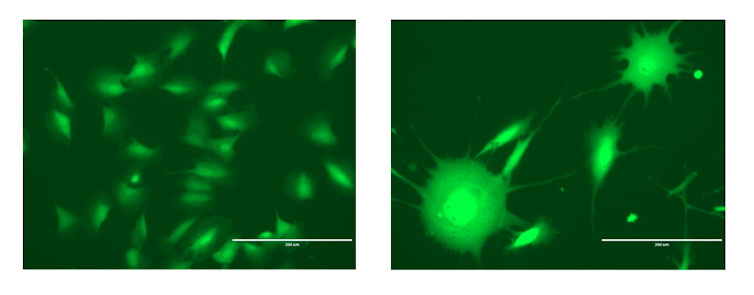Arsenic is a naturally occurring element found in the Earth’s crust. Exposure to arsenic, often through contaminated food and water, is associated with various negative health effects, including cancer.
Arsenic exposure is a global public health issue. A 2020 study estimated that up to 200 million people wordwide are exposed to arsenic-contaminated drinking water at levels above the legal limit of 10 parts per billion set by the U.S. Environmental Protection Agency and World Health Organization. More than 70 countries are affected, including the United States, Spain, Mexico, Japan, India, China, Canada, Chile, Bangladesh, Bolivia and Argentina.
Since many countries are still affected by high levels of arsenic, we believe arsenic exposure is a global public health issue that requires urgent action. We study how exposure to toxic metals like arsenic can lead to cancer through the formation of cancer stem cells.
 Arsenic contamination of food and water
Arsenic contamination of food and water

Your body can absorb arsenic through several routes, such as inhalation and skin contact. However, the most common source of arsenic exposure is through contaminated drinking water or food.
People who live in areas with naturally high levels of arsenic in the soil and water are at particular risk. In the U.S., for example, that includes regions in the Southwest such as Arizona, Nevada and New Mexico. Additionally, human activities such as mining and agriculture can also increase arsenic in food and water sources.

High levels of arsenic can also be found in food and drink products, particularly rice and rice-based products like rice cereals and crackers. A 2019 Consumer Reports investigation even found that some brands of bottled water sold in the U.S. contained levels of arsenic that exceeded the legal limit. Alarmingly, multiple studies have also found that several popular baby food brands contained arsenic at concentrations much higher than the legal limit.
Arsenic and cancer stem cells
Chronic exposure to arsenic increases the risk of developing multiple types of cancer.
The mechanisms by which arsenic causes cancer are complex and not yet fully understood. However, research suggests that arsenic can damage DNA, disrupt cell signaling pathways and impair the immune system, all of which can contribute to cancer development.

Scientists have also linked chronic arsenic exposure to the development of cancer stem cells. These are cells within tumors thought to be responsible for cancer growth and spread. Like normal stem cells in the body, cancer stem cells can develop into many different types of cells. At what stage of cellular development a stem cell acquires the genetic mutation that turns it into a cancer stem cell remains unknown.
Our research aims to identify what type of cell arsenic targets to form a cancer stem cell. We are currently using cell cultures obtained from the same organ at different stages of cellular development to examine how the origins of cells affect the formation of cancer stem cells.
Preventing chronic arsenic exposure is critical to reducing the burden of arsenic-related health effects. Further research is needed to understand arsenic-induced cancer stem cell formation and develop effective strategies to prevent it. In the meantime, continued monitoring and regulation of this toxic metal in food and water sources could help improve the health of affected communities.![]()
Article written by Cristina Andrade-Feraud, Ph.D. Candidate in Environmental Health Sciences, Florida International University and Diana Azzam, Assistant Professor of Environmental Health Sciences, Florida International University
This article is republished from The Conversation under a Creative Commons license. Read the original article.
You might also be interested in:
- Several U.S. communities exposed to high arsenic levels in their drinking water
- New way of cooking rice removes cancer-causing arsenic without losing key nutrients
- Metal pollution in everything we eat and breathe triggering strokes and heart attacks


Who cares say the Republicans and Libertarians. As long as it isn’t me and as long as my tax dollars aren’t wasted by spending it on other people.
Make sure to stay good and hydrated by drinking lots of water. Its good for you.
This is just the start of contamination levels going up as a result of global climate change and our actions to try to compensate for it.
Hell I live in Anaconda MT, we have arsenic in our attics, mine 811 ppm and 2464 LEAD, needless to say both my wife and I have had multiple skin cancer issues, One house I know of had 1850ppm of arsenic in the attic, cancer is rampant here along with MS and other major health issues, impossible for arco to clean up properly,
I live in Anaconda MT in our attic we had 811 ppm of arsenic and 2464ppm of lead, needless to say my wife and I have had multiple skin cancer issues, I know of a house that had 1850ppm of arsenic in the attic, this stuff is like 4 inches deep, our town is rampant with CANCER and MS and other health problems such as kidney disease, there really is no way arco can properly clean up our town,